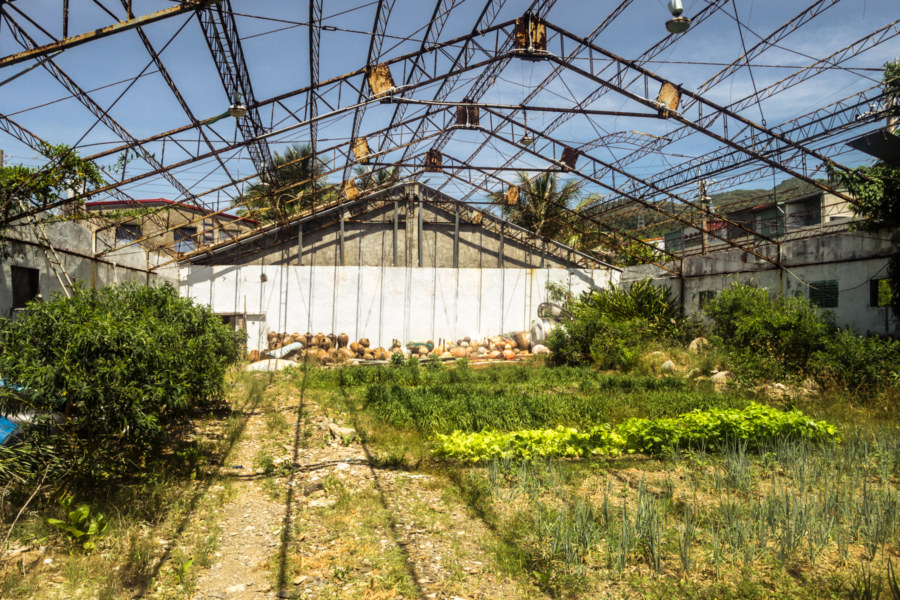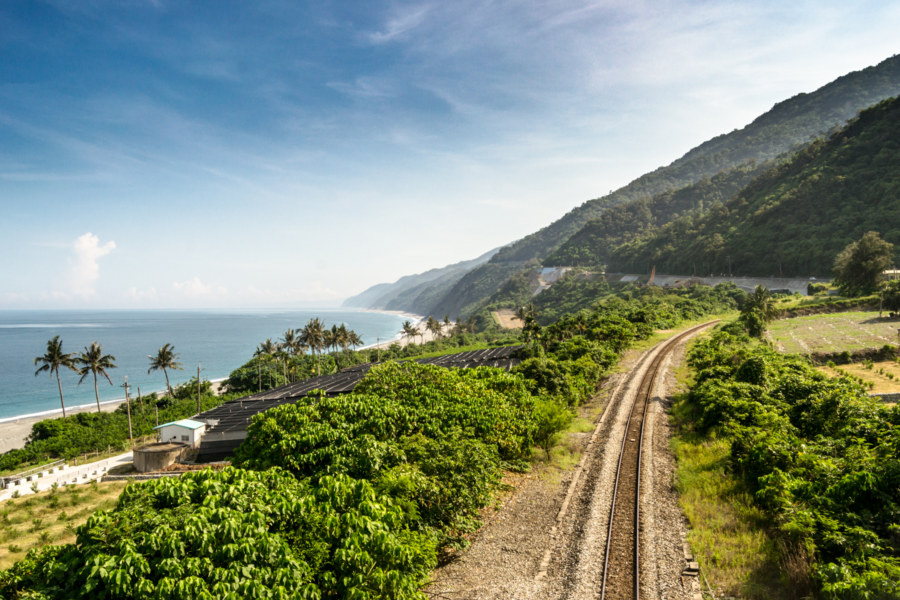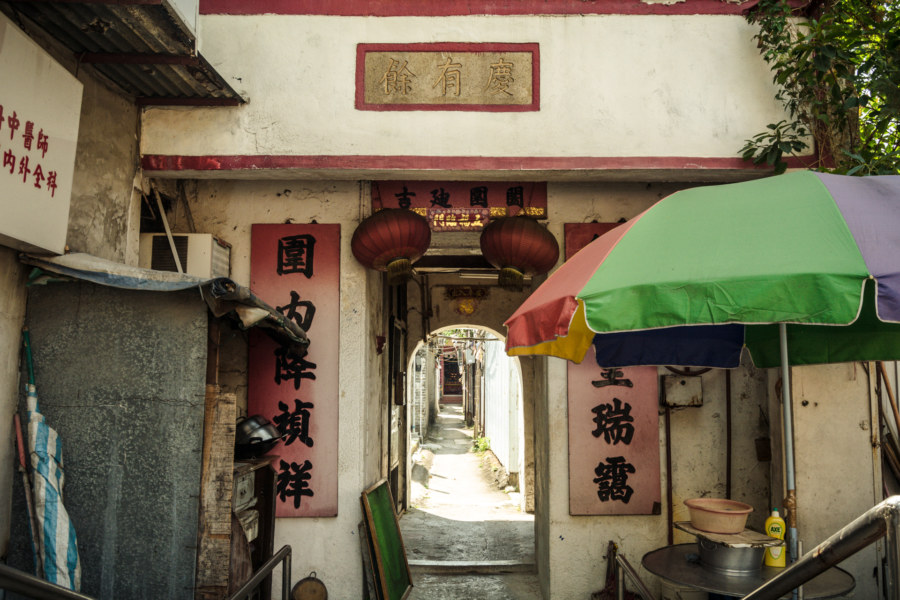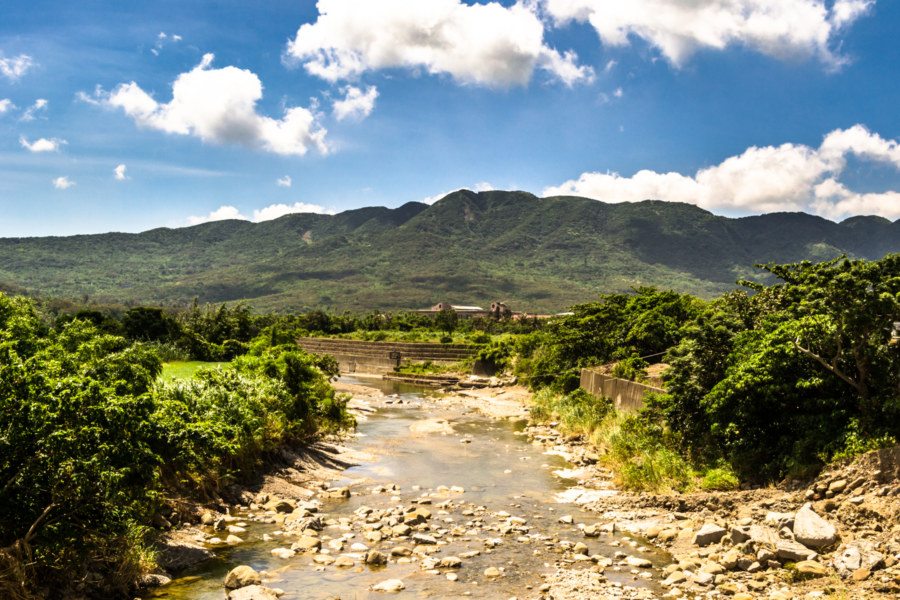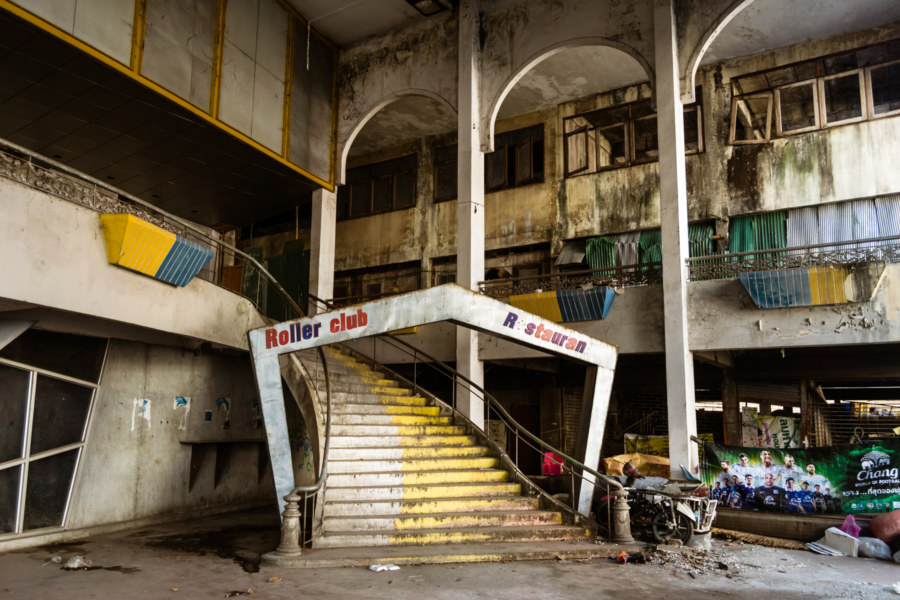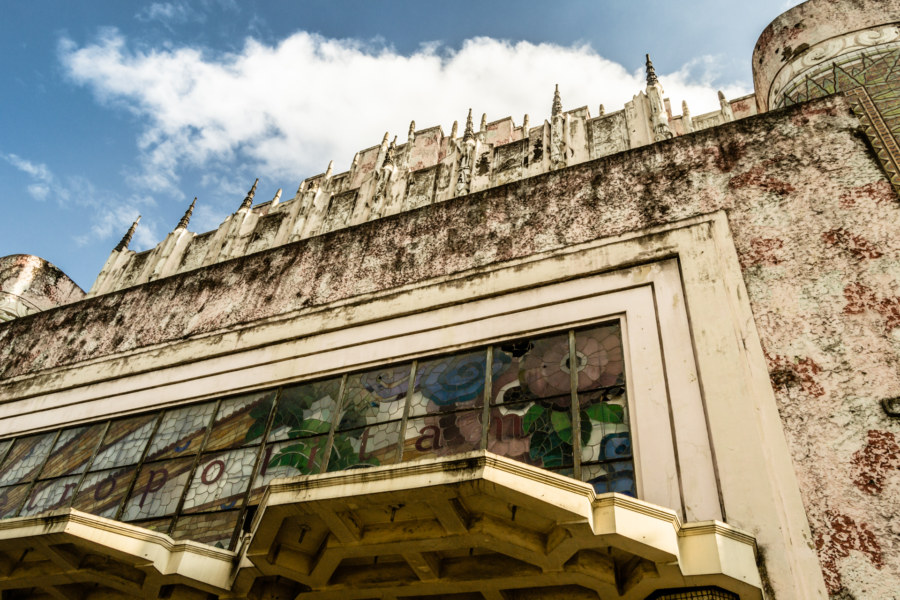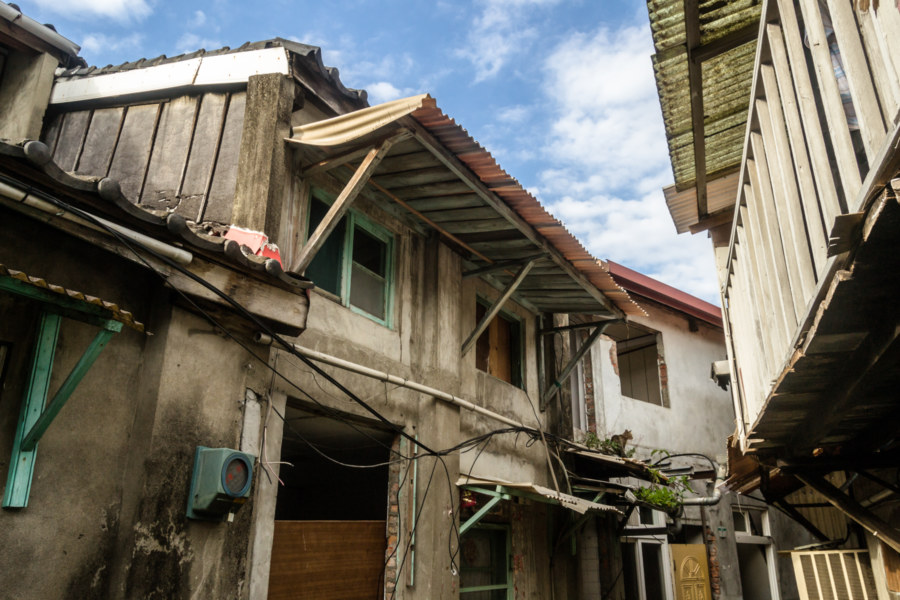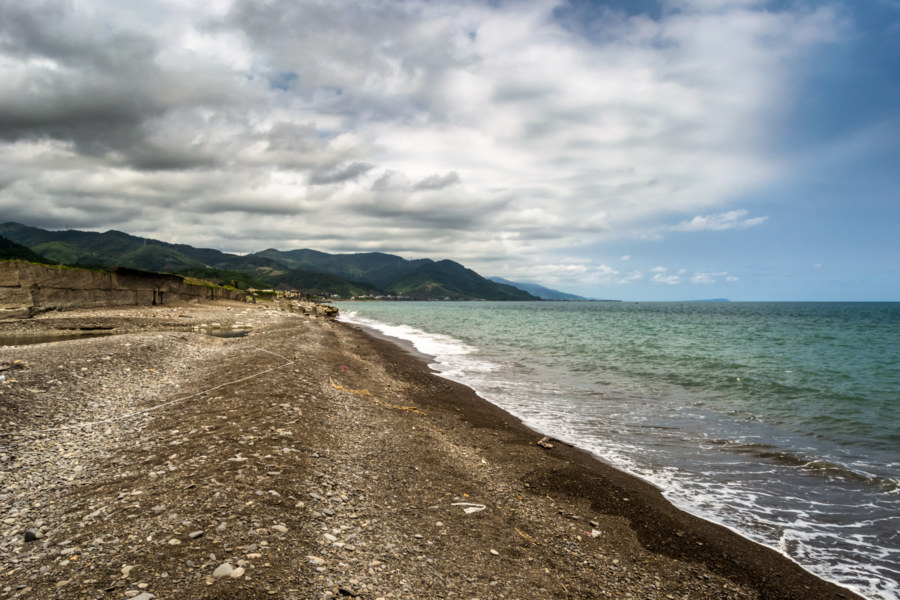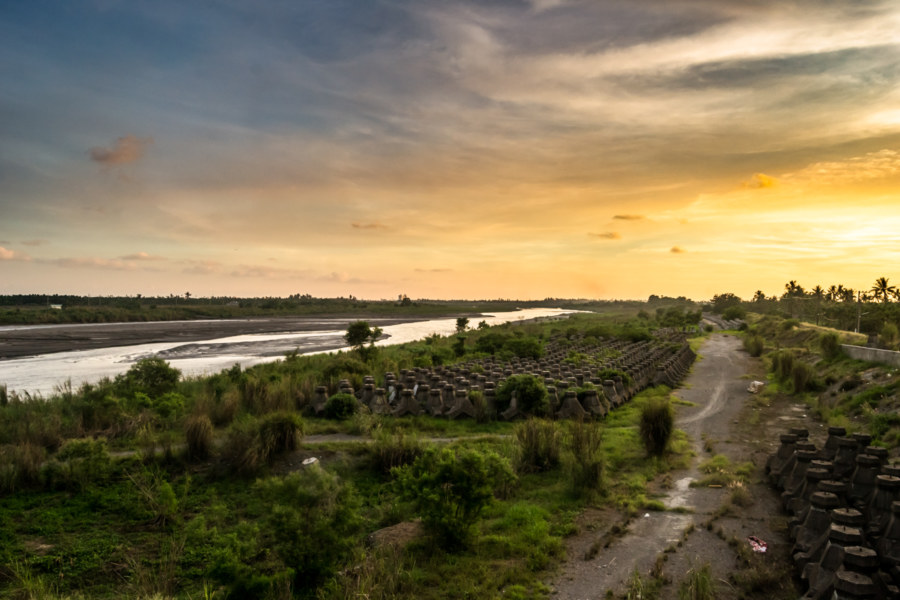I stumbled upon the remains of Dawu Theater 大武戲院 while on a bicycle tour of southern Taiwan in 2015. Located in the small town of Dawu, it was one of approximately 36 theaters operating in Taitung in the cinematic heyday of the 1960s and 70s, all of which are now abandoned or destroyed. This particular theater was in business from 1968 to 1983 and allegedly accommodated as many as 1,200 patrons, earning it the title of nánbàtiān 南霸天, or “southern tyrant”, for how it dominated the industry in the southernmost part of the county. Hardly anything remains after three decades of exposure that would identify Dawu Theater apart from a small sign in the antechamber.
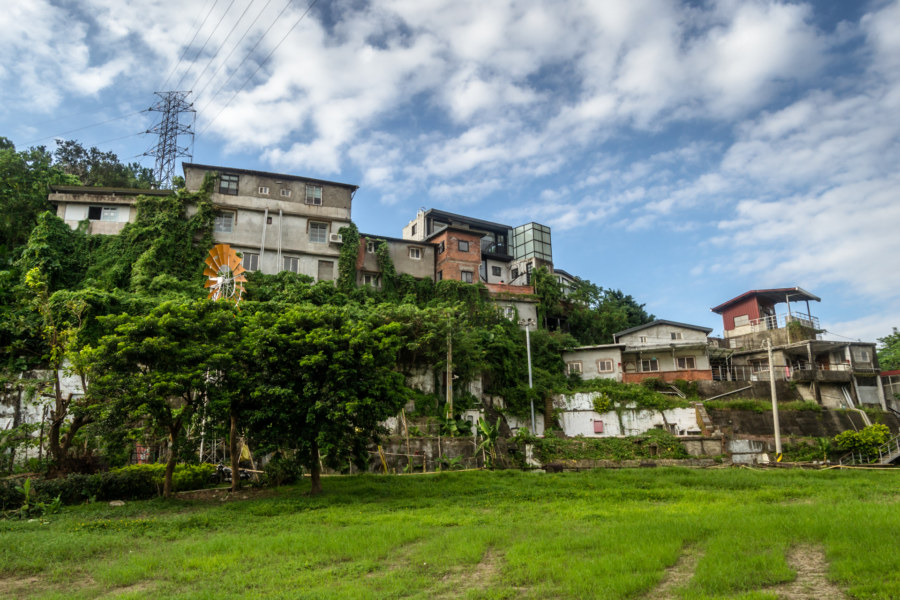
Subterms
Southern Taiwan Ride 2015: Dawu to Taitung City
My last big day of riding around southern Taiwan in June 2015 began in Dawu, Taitung, with only about 55 kilometers to go before arriving in Taitung City. I had been out in the sun far too much the previous day and was feeling rather sluggish and a bit sick so I didn’t end up taking any side trips into the mountains as I made my way north. Even so, the scenery was fantastic, and while I won’t have as much to write about this particular day of my trip, I have plenty of beautiful photographs to share.
Nga Tsin Wai: The Last Walled Village of Kowloon
Nga Tsin Wai Village 衙前圍村 is widely known as the last walled village of Kowloon. Located not far from the former location of the infamous Kowloon Walled City 九龍城寨, the village traces its history back to the 1352 founding of its modest Tin Hau Temple 天后宮. It was fortified in 1724 to defend against bandits and pirates but has, in modern times, lost the moat, walls, and watchtowers that once protected residents from harm. As the very last of its kind in the urban heart of Hong Kong it has become a flashpoint for conflict between the Urban Renewal Authority and the many activist groups and citizens passionate about preserving what remains of Kowloon’s cultural heritage.
Southern Taiwan Ride 2015: Manzhou to Dawu
My fifth day of riding around southern Taiwan in June 2015 delivered me to the most remote parts of the island’s 1,139 kilometer-long coastline. On the previous day I rode from Fangliao, on the southwestern coast, around Hengchun and into the foothills of the Central Mountain Range 中央山脈 to reach Manzhou, one of the last places to find lodging before forging on to Taitung. I had already taken this route while riding all around Taiwan in 2013 so I was familiar with the territory, but that first tour was so rushed that I hadn’t been able to enjoy the scenery. (Actually, I had been outrunning a typhoon the last time I was here—but that’s a story not yet told on this blog.) This time around my intent was to take it slow and explore more of this obscure part of coastal Taiwan.
Space Roller, Chiang Mai
Space Roller is an abandoned rollerskating rink not far from the Arcade Bus Station on the northeastern outskirts of Chiang Mai, Thailand. I dropped in to check it out in January 2016 after reading about it online, possibly here, and was impressed with the scale of the place. It is big, taking up the better part of a city block, with several unfinished add-ons extending into the urban wilderness on either side. Unfortunately there isn’t a lot of credible information about Space Roller in English so this post will consist primarily of photos of what I found in about half an hour of slinking through the shadows.
Manila Metropolitan Theater
Manila Metropolitan Theater, or simply the Met, is the largest and most famous Art Deco theater in Manila. Designed by the prolific Juan M. Arellano, the Met officially opened in 1931 and soon became a focal point for Manila’s high society. Like most of the rest of the city Manila Metropolitan Theater was heavily damaged in the Battle of Manila. The post-war era wasn’t kind to the Met; it fell into disrepute for decades until restoration efforts were undertaken in the late 1970s. Ownership disputes led to another phase of neglect in the mid-1990s and today it remains abandoned despite occasional efforts at rehabilitation.
Fushui Village 富水里
Fùshuǐ Village (富水里) is located on a small parcel of land at the southern edge of Zhongzheng, Taipei, just to the west of Gōnggǔan Station (公館站). Technically the village contains the now-abandoned Jiahe New Village (嘉禾新村), a military dependents’ village previously profiled on this blog, but most common uses of the name refer to the illegal settlement running along Yǒngchūn Street (永春街), just inside the riverside wall. This settlement of around a hundred homes, like nearby Treasure Hill (寶藏巖), was supposed to be destroyed around the turn of the millennium, but plans have gone awry, and its fate remains unclear.
Yonghe Theater 永和大戲院
Yonghe Theater 永和大戲院 is one of dozens of derelict movie theaters in Greater Taipei. Like hundreds of other theaters all around Taiwan this one went out of business in the early years of the new millennium due to changing consumer habits, a topic already discussed at length in previous explorations of places like Datong Theater 大同戲院 in Taitung City and Xinming Theater 新明戲院 in Zhongli. Whereas theaters in the rest of the country are often left to the elements, sky-high property values in the Taipei area strongly incentivize owners to do something with these decaying buildings. In this instance the front of the old theater was been converted for the use of into a 7-Eleven convenience store and an Italian restaurant by the name of Lan De Pasta House 嵐迪義大利麵. I wonder whether patrons of these establishments realize what looms overhead?
Southern Taiwan Ride 2015: Fangliao to Manzhou
Last summer I embarked upon a weeklong bicycle tour in the deep south of Taiwan. I began in Tainan, cycled through Kaohsiung to Pingtung City, spent a day hanging out, and then continued on to Fangliao, where the coastal plain narrows to a thin wedge between the mountains and the sea. There is only one road leading south from here—which meant I covered a lot of ground I had already seen while riding all around Taiwan in 2013. I didn’t mind repeating that beautiful stretch of coastline and, actually, I was looking forward to checking out some places I had breezed by on that first big tour, particularly in Fangshan and Hengchun.
Southern Taiwan Ride 2015: Pingtung City to Fangliao
After spending a day riding around Pingtung City I was ready to hit the road again. With no specific destination in mind—only an intention to head in the direction of Hengchun, far to the south—I checked out of the vintage homestay I lodged at the previous night, stopped at Eske Place Coffee House for a delicious and healthy vegetarian breakfast, changed into cycling wear, and exited the city to the east. I knew almost nothing about where I was headed or what I might see on the third day of my southern Taiwan ride in 2015. I only had one stop planned in advance: a hospital in Chaozhou rumoured to be abandoned. I didn’t know it at the time but I would spend almost the entire day riding through the historic Hakka belt of Pingtung.
